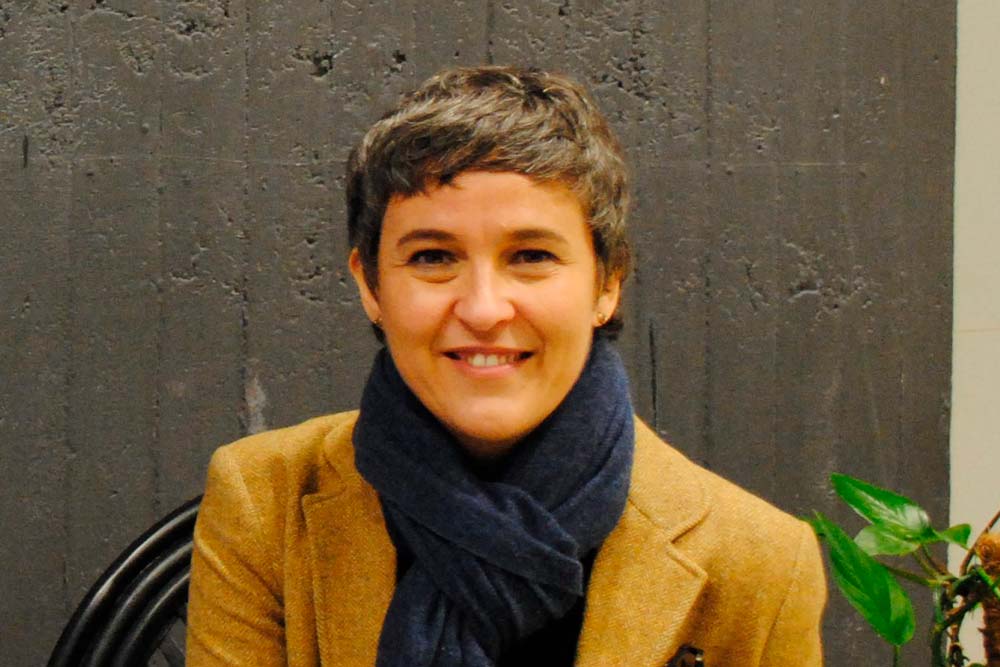
Neus Otero «Isotope geochemistry gives us a tool to see who is behind contamination»
(Year 2019)
Neus Otero is a member of MAiMA, a research group of the University of Barcelona that holds ACCIÓ’s TECNIO certification and works on the analysis of stable isotopes, mineralogy, and geochemistry. For over twenty years, this group has been committed to the transfer of knowledge and technology to the business sector, public administration, and society.
What does MAiMA do?
Our expertise is mainly focused on isotopic geochemistry and mineralogy. We apply these tools to different fields of research: environment, durability of civil works, and food authentication. Our strongest area, and one in which we have been doing research and knowledge transfer for many years, is the environment, especially in relation to water quality, where we investigate the origin of pollution, the disposal of pollutants, and the efficiency of pollutant mitigation strategies.
On the one hand, we work in the field of agricultural, industrial, and urban pollution, and also in the field of mining pollution, mainly in groundwater, but also in surface water. We always use isotopic geochemistry, and this often gives us a tool to determine who is behind contamination. For example, we can distinguish whether a nitrate comes from a chemical fertilizer or from swain waste. We study aquifers to find out if the nitrates we find are largely traceable to chemical fertilizers or animal manure. This information is important in order to adopt the necessary monitoring measures and to determine how to reduce pollution. This research to find out who is responsible for pollution led us to discover that some pollutants degrade naturally and to study these degradation processes. For instance, in the case of nitrates, we have noticed that in certain aquifers pollution decreases naturally. Studying how these natural systems work, we have recently been working on new research lines to be able to induce these processes in places where they do not occur naturally.
Which would you say has been the star project of MAiMA over the last twenty years?
We recently completed a project with the Catalan Water Agency and the company Geoserveis to determine the origin of nitrates in various parts of Catalonia, which I consider to be very important due to its territorial scope. We have carried out very interesting work there, because we have combined our capacities with those of another UB research group, led by Dr. Anicet Blanch. Combining the microbiological markers they have developed with our isotopic markers, we have studied some two hundred nitrate-contaminated points to try to determine where the contamination comes from and what can be done about it.
Right now, we are also studying the impact of the Vall d’en Bas landfill on the Garraf aquifer. These are two examples of projects in which I participate as a principal investigator.
Who are MAiMA’s clients?
Public administration has always been interested in our field of research, and in fact in the early years most of our knowledge transfer projects were with them. However, more and more private companies, mainly consulting firms and environmental engineering firms, see these tools as an added value to be more competitive in their own projects.
Right now, in environmental projects, about 25% of our work is in collaboration with public administrations and 75% in collaboration with companies. The work we do in the field of mineral durability, in which we study slope stability, aggregates used in road pavements, and so on, is mainly carried out in collaboration with the public administration. In the area of food authentication, which is the newest and which we believe may have a lot of potential, we are working in collaboration with a cluster of food companies and other small companies.
What is the secret to keep on transferring knowledge to companies and institutions year after year?
When I started my doctorate, I went to visit the Catalan Water Agency to see if what we wanted to do could be of interest to them, if they wanted to collaborate in the sampling process, and so on. And, in fact, before my dissertation was completed, the Catalan Water Agency had already called us back to see if we could help them with a problem they had with some wells. Since then, we have always remained in contact. Another thing that has helped us has been the organization of courses to explain, above all, the use of isotopes in environmental studies both to people from the public administration and to people from the corporate world. Through these courses attendees see the potential of these tools, and throughout the more than twenty years of history of our group, this has often led them to seek us out.
It is important to receive feedback on what the public administration, companies, and society in general really need in order to be able to develop our research in that direction. Obviously, we need basic research, because our applied research is based on theoretical principles that have to be developed, but it is also very important not to lose this connection with the most important problems that both institutions and companies have to face.
More about Neus Otero
The best advancement in history
Seizing the fact that 2019 has been declared as its International Year, I would say that the periodic table was one of the most important discoveries.
What would you like to see in the future?
True equality between women and men in all countries and fields.
The future advancement that scares you the most
The whole issue of genetic manipulation. Very positive developments can result from it, such as curing certain diseases, but I am a bit wary of where this can end.
The FBG is…
A fundamental tool for us to be able to connect university and research with society, the public administration and the corporate world. We are accredited as a TECNIO centre, and this has partly been thanks to the support of the FBG.

